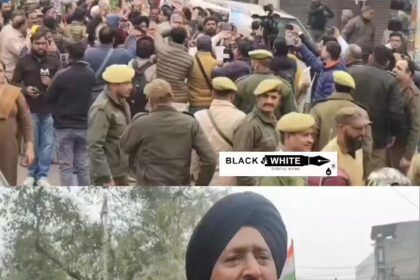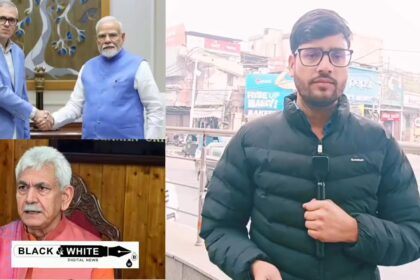||BLACK AND WHITE DIGITAL NEWS||
||Parvinder Singh May 23, 2024||
**Summary:**
1. Concerns raised over Election Commission’s voter turnout data.
2. Opposition demands publication of Form 17C data for transparency.
3. Supreme Court to hear NGO’s petition on May 24.
4. Significant differences between initial and final voter turnout figures flagged.
5. Opposition leaders and activists voice alarm over the discrepancies.
6. Election Commission defends against allegations, warns of potential chaos from data release.
**A Storm of Controversy Erupts Over India’s Voter Turnout Figures**
In the midst of the ongoing Lok Sabha elections, a fierce debate has erupted over the integrity of voter turnout data provided by the Election Commission of India (ECI). Allegations of significant discrepancies between real-time and final voter turnout figures have prompted opposition leaders to demand greater transparency and the timely publication of detailed voting data.
**Opposition’s Demand for Transparency**
Opposition leaders, including senior Congress figure Kamal Nath and Trinamool Congress’s Derek O’Brien, have raised concerns about the substantial differences between initial voter turnout figures and the final numbers released days later. Nath pointed out a startling increase of 1.07 crore votes in the revised figures, which he described as “unprecedented and surprising.” Similarly, O’Brien highlighted a 5.75% increase in the final turnout for the second phase compared to initial real-time data.
Political activist Yogendra Yadav added his voice to the chorus of concern, noting that while small differences between initial and final figures are normal, the delays and lack of detailed data this time are “unusual and worrying.”
**Petition to the Supreme Court**
In response to these concerns, the NGO Association for Democratic Reforms (ADR) has petitioned the Supreme Court to direct the ECI to upload polling station-wise voter turnout data on its website within 48 hours of the conclusion of polling for each phase of the elections. The Supreme Court is scheduled to hear the case on May 24.
ADR’s petition underscores the discrepancies, highlighting the need for greater transparency to maintain public trust in the electoral process.
**Election Commission’s Stance**
The ECI has strongly defended its position, arguing that the indiscriminate disclosure of polling station-wise data could lead to chaos and potentially harm the election process. In a 225-page affidavit, the ECI dismissed the allegations as false and misleading, suggesting that the release of Form 17C data could invite mischief and vitiate the electoral atmosphere.
The ECI asserted that its processes are within the statutory framework and that the NGO’s petition is based on suspicion rather than evidence. It also emphasized that no election petitions have been filed based on such discrepancies in the past, indicating a lack of substantive issues.
**A Call for Clearer Communication**
Despite the ECI’s reassurances, the controversy highlights a broader issue: the need for clearer communication and transparency in the electoral process. As Kamal Nath pointed out, the absence of transparency can make even correct processes appear suspect. To maintain trust, the ECI must address these concerns head-on and provide a clear explanation for the observed discrepancies.
**The Road Ahead**
As the Supreme Court prepares to hear ADR’s petition, the debate over voter turnout data has underscored the critical importance of transparency in maintaining public confidence in democratic processes. Whether the court will mandate the ECI to disclose detailed data remains to be seen, but the case has already spotlighted the need for robust mechanisms to ensure electoral integrity in one of the world’s largest democracies.
This unfolding saga promises to be a pivotal moment in India’s electoral history, with potential implications for how future elections are conducted and overseen. The nation’s eyes are now firmly fixed on the Supreme Court, awaiting a decision that could reshape the landscape of electoral transparency and accountability in India.
Leave a comment
You Might Also Like
The RSS Whose Ideology BJP Follows Did Not Hoist the Indian Flag at Its Office for 50 Years: T.S. Tony
The RSS Whose Ideology BJP Follows Did Not Hoist the Indian Flag at Its Office for 50 Years: T.S. Tony…
0 Min Read
CM Omar Abdullah Flags LG Manoj Sinha Interference in J&K Governance, Says Centre Supportive Except On Statehood
CM Omar Abdullah Flags LG Manoj Sinha Interference in J&K Governance, Says Centre Supportive Except On Statehood #OmarAbdullah #JammuAndKashmir #JKPolitics…
0 Min Read
Nashe Se Dour Rahe Sports Me Hisa Le Cabinet Minister Satish Sharma
Nashe Se Dour Rahe Sports Me Hisa Le Cabinet Minister Satish Sharma #SayNoToDrugs #DrugFreeYouth #StayAwayFromDrugs #ChooseSports #SportsForLife #HealthyYouth #FitIndia #YouthEmpowerment…
0 Min Read
Snowfall Likely in Higher Reaches of Kashmir; Rain Expected in Plains of J&K Till December 22: Meteorological Department Yeh Facebook ke liye SEO-friendly hashtags hain:
Snowfall Likely in Higher Reaches of Kashmir; Rain Expected in Plains of J&K Till December 22: Meteorological Department Yeh Facebook…
0 Min Read









